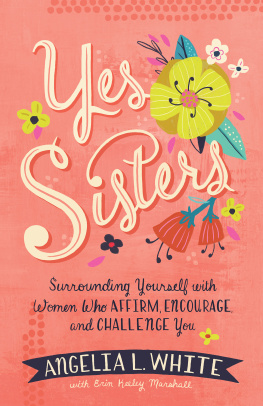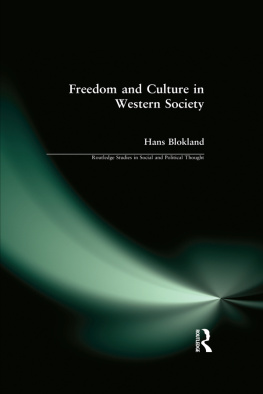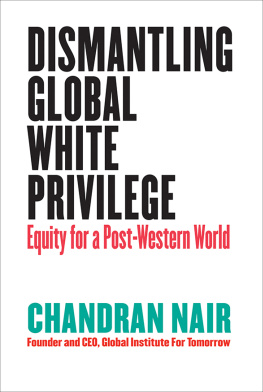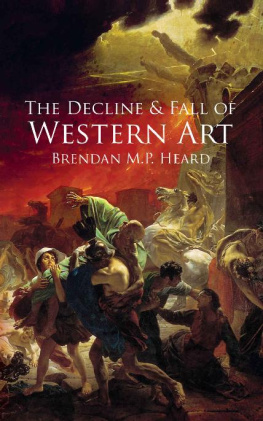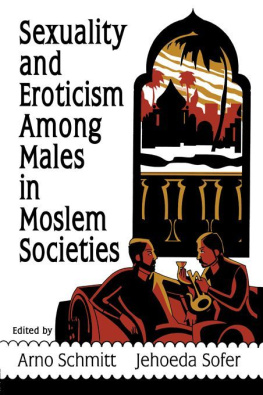First published in 2021 by
Berghahn Books
www.berghahnbooks.com
2021 Maja Tabea Jerrentrup
All rights reserved. Except for the quotation of short passages for the purposes of criticism and review, no part of this book may be reproduced in any form or by any means, electronic or mechanical, including photocopying, recording, or any information storage and retrieval system now known or to be invented, without written permission of the publisher.
Library of Congress Cataloging-in-Publication Data
Names: Jerrentrup, Maja Tabea, author.
Title: A Twisted Style: The Culture of Dreadlocks in Western Societies / Maja Tabea Jerrentrup.
Description: New York: Berghahn, 2021. | Includes bibliographical references and index.
Identifiers: LCCN 2021010646 | ISBN 9781800730700 (hardback) | ISBN 9781800730717 (ebook)
Subjects: LCSH: DreadlocksSocial aspectsWestern countries. | HairstylesSocial aspectsWestern countries. | Cultural appropriationWestern countries.
Classification: LCC GT2295.W47 J47 2021 | DDC 391.5dc23
LC record available at https://lccn.loc.gov/2021010646
British Library Cataloguing in Publication Data
A catalogue record for this book is available from the British Library
ISBN 978-1-80073-070-0 hardback
ISBN 978-1-80073-071-7 ebook
Introduction
Why do more and more people in so-called Western cultural contexts grow dreadlocks? This hairstyle implies a long-term commitment and is difficult to control, predict, and change; thus it seems unsuitable for our fast-paced times. Furthermore, dreadlocks even evoke negative associations such as dirtiness and professional failure. Although it is possible that there was a history of dreadlocks in Europe for people of European descentfor example, the Vikings probably wore them (see Ashe 2015, 36)there is no continuous history as in various regions of Africa, in Jamaica, or among South Asian sadhus. Therefore, people of European descent occasionally have to justify their dreadlocks with regard to cultural appropriationin this case of specific relevance, as it is about a meaningful feature of an often oppressed group (for a discussion, see Daynes 2008, 164; Urban 2015, 131f.; and Robinson 2018). So there are some obvious arguments against wearing dreadlocks in Western cultural contexts.
However, finding out reasons why people still grow dreadlocks turns out to be quite difficult, because usual ethnographical methods like participant observation partly fail: there is no coherent (sub)culture, no place to physically move to in order to meet dreadheads; in short, there is no clearly defined cultural contexton the contrary, members of very different groups, from hippies to hipsters to punks, can wear the hairstyle. Thus, one more question arises: how can research be done on groups like the dreadheads, which have points of contact and overlaps with different subcultures, but may not even be a subculture of their own? A triangulation of methods was used to gain insights and to compensate for the weaknesses of every single method, among them interviews, (participant) observation on social media, as well as my experiencing the feeling and the concerns a dreadhead deals with by wearing (some) dreadlocks by myself.
Even at first glance, when just entering dreadlock groups on Facebook, several aspects are surprising. The hairstyle, one might assume, represents a conscious way of making oneself ugly, to rebel against society. However, frequent topics in dreadlock groups are related to beauty, even in a very conventional way, discussing how dreadlocks look voluminous, which hair colors are attractive, which dread jewelry to use, and how to make dreadlocks longer by attaching extensions.
Yet, dreadlocks go deeper than mere physical beauty; they are also strongly connected to identityeven the term dreadhead shows that one can achieve a new cultural identity with the hairstyle, however vaguely outlined it may be. Further, the term dread journey is frequently used to denote the time a person wears dreadlocks and the way this journey is described, with ups, downs, and crises, the experiences made as a dreadhead, and what the dreads have taught the individual, including patience, tolerance, self-confidence, and self-love. There is often a connection to spiritual aspects that comes along with the fascination for foreign cultures and spiritual beliefs.
For me, having dreadlocks and writing this book was comparable to a journey as well. This journey took me through many contradictions that would have to result in cognitive dissonances. Cognitions, if related to each other, are either consonant or dissonant. According to Leon Festingers original theory (1957), people have a motivation to reduce dissonance and a need for consonance. Later, dissonance was associated with unwanted consequences (Cooper and Frazio 1984) or with a lack of moral integrity (Steele 1988); however, even though the theory has been seriously challenged by revisions or alternative theories, there is strong support for the superiority of the original version over others in explaining all the evidence found in the related studies (Eser Telci, Maden, and Kantur 2011, 380).
To understand cultural aspects underlying dreadlocks, I had to learn the logic behind the way cognitive dissonances are solved or how in many cases these dissonances just seem to exist and to be accepted. Situational assessments may be a strategy to deal with the dissonances, as well as the concession of a variety of possible interpretations (see Jerrentrup 2011, 210ff.). Furthermore, a new ability to cope with dissonances might show itself in this context: In the Western mind, boundaries appear to be more stable and fixedself and environment, mind and matter, subjective and objective, material and spiritual, secular and religious, and so on, stated Sinha and Tripathi in 1994 (1994, 136). However, this might be currently changing and the culture of dreadlocks can be interpreted as a sign for a postmodern lifestyle full of dissonances, yet very integrative. In this book, I will trace back the various contradictions surrounding the style.


